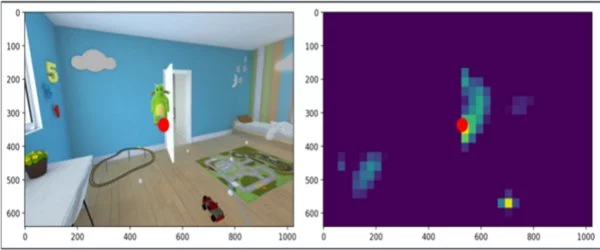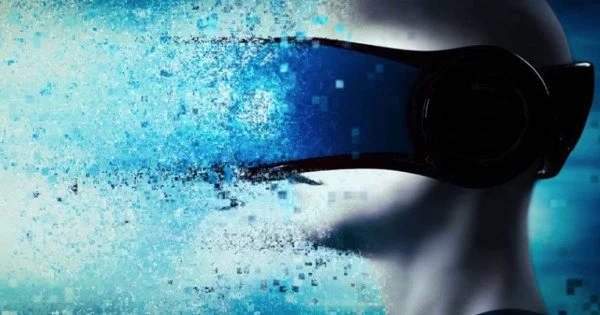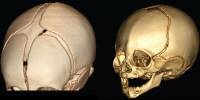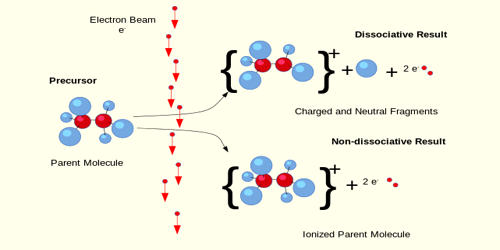Developing a virtual reality (VR) game to objectively identify Attention-Deficit/Hyperactivity Disorder (ADHD) is a difficult and time-consuming task. ADHD is a neurodevelopmental illness that requires a thorough evaluation by healthcare specialists in order to be properly diagnosed. Virtual reality games have the potential to be utilized as part of a larger examination toolkit, but they should not be regarded as the primary or ultimate diagnostic tool.
A virtual reality game provides an objective evaluation of attention deficit disorders and may lead to a more effective therapeutic approach.
Researchers demonstrated that disparities in eye movements can be utilized to detect ADHD using virtual reality games, eye tracking, and machine learning, potentially giving a method for more precise diagnosis of attention problems. Their method could potentially be utilized as the foundation for ADHD treatment and, with minor tweaks, to evaluate other diseases such as autism.
ADHD is a prevalent attention issue that affects around 6% of all children worldwide. Despite decades of research into objective markers, ADHD is still diagnosed by questionnaires, interviews, and subjective observation. The outcomes can be confusing, and traditional behavioral exams do not indicate how youngsters deal with everyday events. A team of researchers from Aalto University, the University of Helsinki, and Ko Akademi University has developed EPELI, a virtual reality game that can be used to detect ADHD symptoms in youngsters by replicating real-life events.
We tracked children’s natural eye movements as they completed various activities in a virtual reality game, and this proved to be an efficient method of diagnosing ADHD symptoms. The ADHD children’s focus paused longer on diverse objects in the environment, and their gaze jumped from one point to another faster and more frequently.
Liya Merzon
The team is now tracking children’s eye movements in a virtual reality game and using machine learning to seek for differences in youngsters with ADHD. The new study included 37 children with ADHD and 36 youngsters who served as a control group. EPELI and Shot the Target, a game in which the user is trained to detect things in the surroundings and “shoot” them by gazing at them, were played by the children.
‘We tracked children’s natural eye movements as they completed various activities in a virtual reality game, and this proved to be an efficient method of diagnosing ADHD symptoms. The ADHD children’s focus paused longer on diverse objects in the environment, and their gaze jumped from one point to another faster and more frequently. This could indicate a delay in visual system development and poorer information processing than other children,’ said Liya Merzon, an Aalto University PhD researcher.

Brushing your teeth with distractions
According to project leader Juha Salmitaival, an Academy Research Fellow at Aalto, one of the game’s strengths is its motivational effect. ‘This isn’t only a new tool for assessing ADHD symptoms objectively. The game is much more appealing to children than typical neuropsychological testing,’ he says.
EPELI was created by Salmitaival in collaboration with Professor Matti Laine of Bo Akademi University and Erik Seesjärvi, a PhD researcher at the University of Helsinki and clinical neuropsychologist at Helsinki University Hospital (HUH). The game is offered to HUH neuropsychologists who work in pediatric neurology and psychiatry.
‘Those who are interested can use EPELI to help them with their clinical practice,’ Seesjärvi explains. ‘It has been a very pleasant experience. ‘After the first pilot, all of the neuropsychologists who responded to a feedback survey indicated they had benefited from utilizing virtual reality approaches as a complementing tool in their work.’
Topi Siro, an Aalto alum who now works at Peili Vision Oy, oversaw EPELI game development. ‘The game includes a variety of chores that mimic daily living, such as cleaning your teeth and eating a banana. The player must recall the duties despite environmental distractions such as a TV that is on. The game measures everything: how much the child clicks on the controls and how efficiently they perform the tasks. Efficiency correlates with everyday functioning, whereas children with ADHD often have challenges,’ says Siro.
Motivation for rehabilitation
Virtual reality games could have larger therapeutic implications, according to the experts. Gaming could be used to help with ADHD rehabilitation in addition to assessing symptoms. ‘We want to create a gamification-based digital therapy that can assist youngsters with ADHD to become passionate about doing things they wouldn’t normally do. In the United States, there is already an approved game for ADHD rehabilitation,’ explains Salmitaival. In collaboration with experts at the University of Oulu, the team is investigating rehabilitation options.
Linda Henriksson, a senior lecturer at Aalto University who was also involved in the study, emphasizes virtual reality’s remarkable potential for such applications. ‘I see virtual reality as an interesting tool because it can be used to precisely control what happens in the stimulus world while at the same time collecting information about behavior in a natural situation,’ says Henriksson, an expert in how the brain processes visual information.
Other possible applications for EPELI in analyzing a wide range of issues with everyday challenges have already been found by researchers. It might, for example, be used to assess issues with activity planning and flexibility in people with autism. With few adjustments, this approach could be used to examine language issues, brain damage, adult ADHD, cerebral palsy symptoms, and even memory decline with age. ‘Our Geneva colleagues are researching aging-related disorders. Early identification of Parkinson’s and Alzheimer’s diseases is a key opportunity on the horizon,’ says Salmitaival.
















